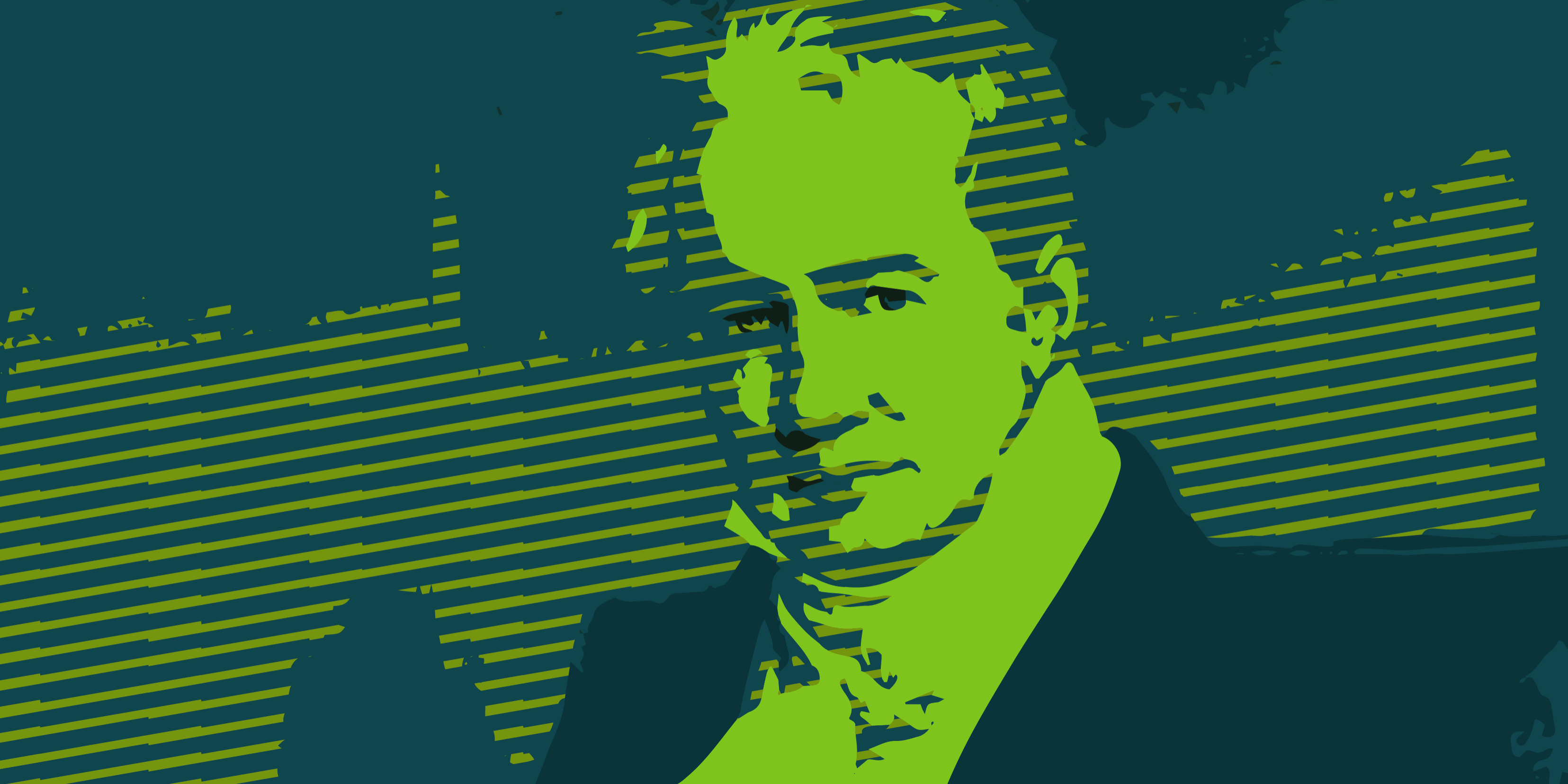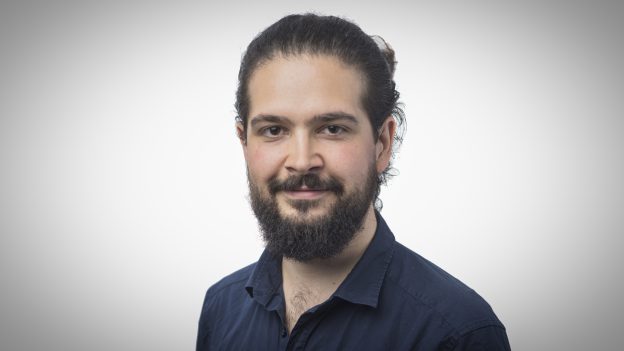Making sense of our connected world

Discovering the digital cosmos with Humboldt
He was not only a star who filled lecture halls with reports of his travels and discoveries. Alexander von Humboldt is known today as both the last polymath and a pioneer of interdisciplinarity at a time of scientific specialisation. He was known for his meticulousness and his intuition for underlying connections. His work is still significant today – and has the potential to inspire the scientific community to self-reflection. On the occasion of his 250th birthday, Florian Lüdtke commemorates Humboldt’s legacy – from the point of view of the internet and society research institute that bears his name.
Admiration of the spirit of discovery
Hardly any other scientist in the 19th century was portrayed, interpreted and sometimes even instrumentalised more frequently than Alexander von Humboldt. No wonder many places in Germany and beyond are named after him. In addition, Humboldt’s versatility provoked many different perspectives on him, as the hundreds of Humboldt biographies prove. This will certainly continue in the year of his 250th birthday. What makes Humboldt so appealing?
Due to the specialisation of science from the middle of the 19th century onwards, researchers have since devoted themselves to questions that they try to answer within their discipline alone. However, it is the man of spectacular adventures – and not his sedentary brother, who reformed education in Prussia – who is in demand today. Is it because of the complexity of the internet society that the universal genius is receiving more attention? Our institute, too, is named after Alexander von Humboldt, because our internet researchers are breaking into unknown worlds, exploring the dynamic relationships between the internet and society in the digital age and, in doing so, crossing the boundaries of their discipline. In addition to being the “adventurer”, Alexander von Humboldt stands for three essential traits of science: he was a pioneer of interdisciplinary, holistic research, a networker and a science communicator.
Interdisciplinary research
Take today’s discussions on climate protection and sustainability, which Humboldt, with his curiosity about nature, contributed to in important ways. In his speeches, he drew attention to the consequences of human intervention in nature, as he recognised early on that man is part of nature and does not rule over it. In order to develop this understanding of the interplay of organisms, Humboldt could not allow himself to be limited by disciplines. His work demanded that he act as a geologist, zoologist and social scientist simultaneously. Consistent with this, his works range from “Mineralogical observations to some basalts on the Rhine” to botanical research (“Florae Fribergensis specimen”, 1793) to numerous physiological experiments to the two-volume work “Attempts about the irritated muscle and nerve fibre” published in 1797. (see AvH Portal of the Staatsbibliothek zu Berlin)
Humboldt specialised in most branches of natural philosophy (today known as natural sciences). He was also one of the few scholars who advocate for a unity among the separate fields of science; indeed, as he wrote in his work Kosmos, he believed they were all connected by nature. Humboldt’s holistic view of nature, which spanned disciplines and also brought the natural sciences and the humanities together, has been lost. In fact, the sciences have increasingly been divided into a multitude of disciplines. Only more recently has there been a return to more interdisciplinarity. Humboldt is an important role model in the endeavour to look beyond one’s own discipline in a highly complex and global internet society.
Networking
In the light of rapidly developing technical progress, worries about our emotional health is growing. Individual disciplines can only provide approaches that offer us a greater understanding of social developments and upheavals. For example, digitalisation cannot only be understood in technical terms and migration is not only about economics. A look at Humboldt shows us that, by taking an interdisciplinary view of the digital society, we can better classify modern phenomena and developments. But Humboldt, the lone researcher who pondered on top of the Chimborazo that everything was connected “by a thousand threads” (Wulf, 2015, p. 210), is no longer a realistic model for today regarding the complexity of the digital society and the sophistication of science. Today, the many disciplines simply cannot be unified in one person.
Global networking through the internet teaches us to understand research as networked. More and more data can be linked and evaluated by researchers using new methods. For this reason, Humboldt’s claim to a holistic approach to science should be seen as a model for internet and social research today. In order to assess the social changes brought about by the internet, machine learning and digital media, we need an informed discourse on their consequences and about the possible ways of shaping them. Just as companies that want to develop in the field of artificial intelligence, for example, cannot afford to engage only computer scientists, science cannot afford to carry out research in its own little chamber – it is needed to network more strongly in science in order to take an interdisciplinary look at digitalisation.
Humboldt is also a role model in this respect. He was part of a global network and promoted scientific and social exchange on the latest findings. In 1828, some 500 researchers came to Berlin for a Humboldt Conference that called on researchers to exchange ideas rather than merely present their research. But his ambitions went even beyond this. As Andrea Wulf writes in her Humboldt biography The Invention of Nature: Alexander von Humboldt’s New World (2015, p.249), Humboldt “envisioned an interdisciplinary brotherhood of researchers who would exchange and share their knowledge.” That’s something we should inspire to even 250 years later. In consistency with his ambitions, during his time in Russia he lived on this idea: In his lecture at the Imperial Academy of Sciences in Saint Petersburg, he called on scientists to investigate geomagnetius globally. The call was successful, three years later the community he had called upon collected nearly two million observations (p.272) – an international cooperation known under the term “Magnetic Crusade”. Moreover, Humboldt supported young scientists such as Charles Darwin, Louis Agassiz, Joseph Dalton Hooker and Hermann Schlagintweit in their research – not only by advancing their knowledge, but also by helping them expand their relationships and resources (pp. 274-295).
Communicating science
In addition to his network consisting of other scientists, politicians and the educated middle classes, Humboldt was also an experienced science communicator. He shared his insights and his global view of nature with a non-scientific audience: after his travels in South America, Humboldt gave more than 70 lectures in Berlin in 1927-28: 61 lectures in front of 400 students and teachers at Berlin University. In addition, he presented his research in 16 events at the Singakademie – today’s Gorki Theater. Each of these famous lectures reached up to 1,000 listeners with divers educational backgrounds. He was keen to make free access for all possible, so he also argued for women to be able to participate, although they were excluded from Prussian universities until the end of the 19th century.
In addition to calling for a holistic approach to nature, Humboldt also advocated for not drawing too strong a dividing line between science and the arts. No wonder, he is quoted to have said: “Knowledge and cognition could never ‘chill the feeling that killed the creative power of the imagination’ – instead they ‘mature astonishment, excitement and emotion.’” (Wulf, 2015, p. 309) He made this conviction part of his scientific practice.In addition to his writings, he produced numerous drawings, some of which are also thought of as the first infographics. With his way of combining poetry, science and art, he thus influenced the author Henry David Thoreau. Humboldt’s work and approach to knowledge encouraged him to combine natural science and poetry in his book “Walden“.

Infographics from the 19th century: Humboldt’s natural paintings
In order to facilitate an informed discourse, researchers should learn to use descriptive methods of knowledge transfer. This is especially important today, as the experts of the “Siggen Kreis” recently emphasised, since consensus in society is eroding and “science often does too little to oppose those who question science”. In addition to narrative science communication, Humboldt’s attempt to draw less strict boundaries between science and art can inspire us today. Art and science help each other to develop new ideas, methods and forms of representation. They can learn from the fact that they address different target groups and still strive to achieve the same objective; namely to explain and question the world around us. Digital technologies offer wonderful opportunities for this. Art projects use methods of data analysis, visualisation techniques and machine learning as well as the dive into the depths of the web. Research and science communication could benefit from experimenting more with digital forms of representation.
What now?
Today Humboldt means many different things – he represents a spirit of discovery, he was an environmentalist, humanist and defender of interdisciplinarity, and he was a gifted networker. However, he also stands for a passionate effort to gain knowledge – an aspect that links his various roles. He carried out countless measurements and wrote them down in detail, he was a poet and an open-minded person who let nature affect him, and he did not omit his own feelings from his descriptions. This is why he is so attractive as a researcher and why we are able to write about him enthusiastically even today.
By presenting these reflections on Humboldt I would like to inspire three things: In order to gain a better understanding of the digital society – and ultimately to expand our creative scope within the digital transformation – we should focus on holistic, interdisciplinary research projects. Humboldt, with his interconnection of disciplines, opposed specialisation and pleaded for the unity of science. Given the complexity of the various disciplinary perspectives – legal, economic, political, technical, media science, etc. – when it comes to topics such as data protection, platforms or AI applications, we should invest more time and resources in bringing together researchers in networks. In order for the findings to reach those who can benefit from them, the results of the research should be communicated to different target groups in a clear and innovative way using digital methods. Humboldt would probably not think too highly of the fact that 250 years later poorly formatted PDFs are the most common form of publication.
Many thanks to Benedikt Fecher for the feedback on this article. Cover photo: Larissa Wunderlich.
Florian Lüdtke is the Coordinator Science Communication and Press at the Alexander von Humboldt Institute for Internet and Society (HIIG).
This post represents the view of the author and does not necessarily represent the view of the institute itself. For more information about the topics of these articles and associated research projects, please contact info@hiig.de.

You will receive our latest blog articles once a month in a newsletter.
Research issues in focus
Online echoes: the Tagesschau in Einfacher Sprache
How is the Tagesschau in Einfacher Sprache perceived? This analysis of Reddit comments reveals how the new simplified format news is discussed online.
Opportunities to combat loneliness: How care facilities are connecting neighborhoods
Can digital tools help combat loneliness in old age? Care facilities are rethinking their role as inclusive, connected places in the community.
Unwillingly naked: How deepfake pornography intensifies sexualised violence against women
Deepfake pornography uses AI to create fake nude images without consent, primarily targeting women. Learn how it amplifies inequality and what must change.




